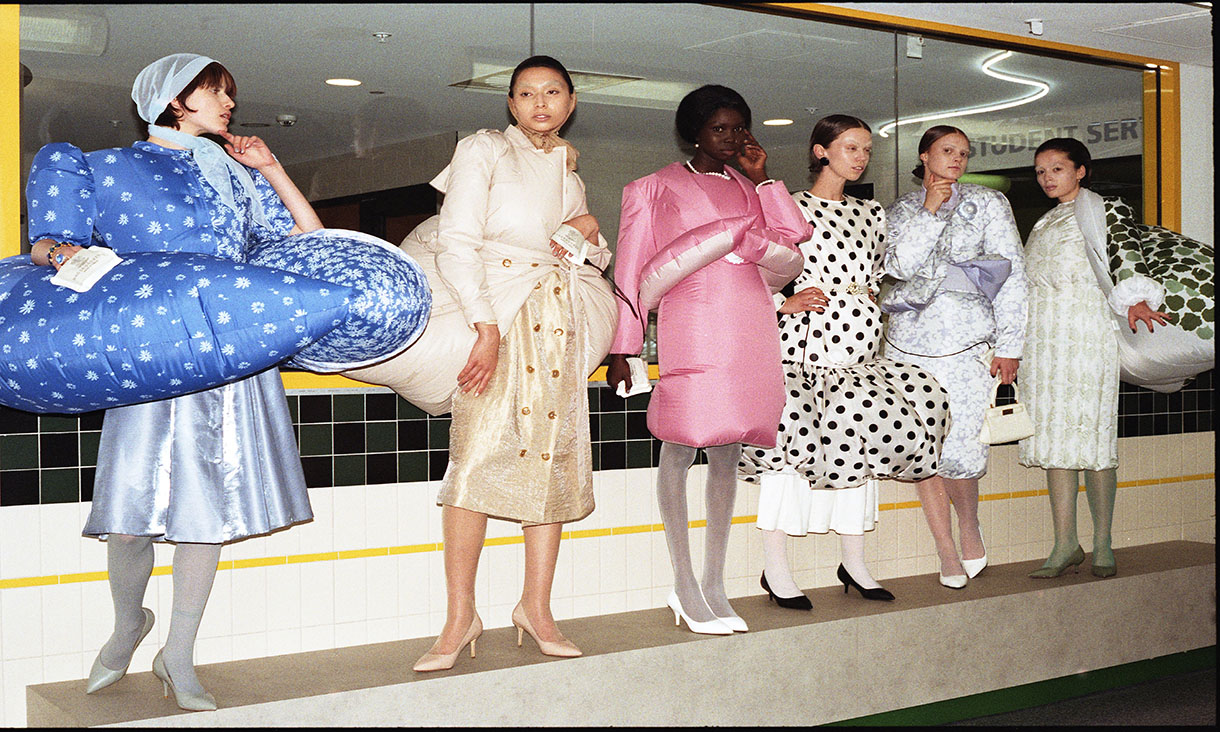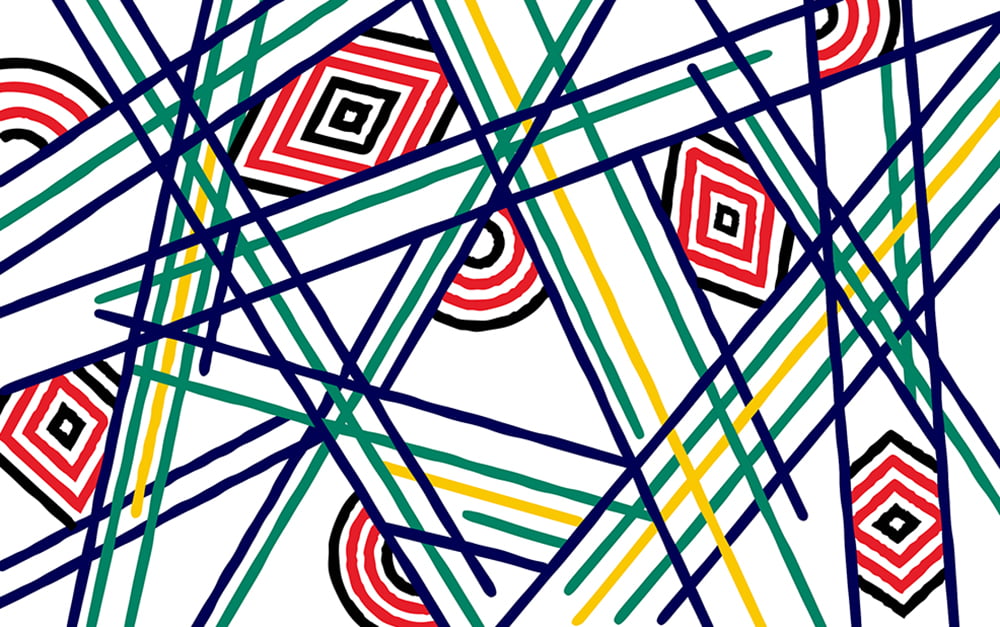- Learning mode:
- On campus
- Entry score:
- Duration:
- Full-time 2 years
- Fees:
- Next intake:
- February
- Location:
- Melbourne City
We seek to imagine future fashion design contexts, create ethical design propositions and use cross-disciplinary design strategies to drive global and competitive creative practices.
You will establish your design, communication and presentation methods and strategies for fashion garments, products, accessories, objects, artefacts, materials, spaces and experiences specific to your design practice.
The course is dedicated to advancing your fashion design practice through classes that give you the strategies to create specialised propositions, and to target specific areas of commercial and artistic markets, research directions and cross-disciplinary practices. You will choose electives that enable you to customise your studies, culminating in a collection, design project and research investigation.
You will finish your studies with a portfolio of creative practice, development and research to launch your career in the global industry. Additionally, you will work with academic staff and industry experts to produce a digital publication, showcasing your graduate outcomes globally.
This degree has a stellar record of students and graduates winning major fashion design awards and scholarships, and receiving invitations to participate in national and international showcase events, including:
Experience hands-on studio learning, and participate in industry projects that provide insight into the global workplace.
Collaborate with and gain feedback from industry partners on a range of activities, ensuring a relevant and innovative global industry practice.
This degree has a strong record of students and alumni winning major fashion design awards and scholarships.
You will work directly with guest practitioners and industry experts, providing you with key practice experience.
This will include the review and critique of your design practice, collaboration on activities and projects, masterclasses to enhance your learning experience, as well as direct collaboration for projects, assessments, events and activities that contextualise your practice.
You will work rigorously with staff who will guide you through advanced studio practice, bookmarked by industry-relevant assessments that link to emerging contexts, markets and research practice. You can expect to attend open studio critiques, course tutorials, guest presentations, workshops and events to support and enhance your learning experience. You will become proficient in self-directed research, experimentation, construction, prototyping and presentation in a variety of formats.
This course will enable you to launch your fashion creative practice, within local and global communities with in-depth understanding of its social and cultural contexts.
The types of classes you have will depend on the course you’re studying. Classes are offered in various formats designed to provide meaningful engagement with staff, industry and peers and provide for access and use of spaces where learning can be applied and active, including an array of specialised equipment.
Most RMIT courses do not include passive large-scale classes such as lectures, instead the content traditionally provided in lectures is made available online. This may be in the form of readings, videos or other on-demand learning materials. This content will also support the basis of interactive learning that takes place in on-campus classes.
The world is constantly changing, and there are universal skills that can help you adapt to the evolving nature of work and global engagement.
As part of your study experience at RMIT, we provide 6 future-focused RMIT Capabilities:
RMIT Capabilities are built into your course as well as some of our extracurricular experiences. They inform the design and delivery of your learning activities and assessments, so by the time you graduate, you’ll be ready to apply these capabilities in your life and work.
The School of Fashion and Textiles has strong and direct relationships across a range of industry, research and community partners that position your graduate outcomes in authentic contexts.
Students collaborate and receive ongoing feedback on their work from our partners on a range of activities, ensuring you a relevant and innovative global industry practice.
Recent industry projects include students collaborating with Nike on a series of RMIT x NIKE makers labs, and graduates participating in their Global Talent Recruitment program.
Students and graduates have undertaken placements and have gained roles at the following brands and designers:
Many alumni have gone on to establish independent design practices, which have been recognised in national and international competitions and fashion weeks. These practices include:
RMIT offers a range of opportunities for our students to study abroad through overseas work, exchange and study experiences with over 165 partner universities worldwide.
The knowledge and skills you will acquire throughout this degree and how they can be applied in your career are described in the learning outcomes.
Start your journey by enrolling in the Bachelor of Fashion (Design) (Honours). Enjoy the same first-year course structure as the Master of Fashion (Design) and gain access to a Commonwealth Supported Place to reduce your study costs for the first year of your degree.
Upon completing the honours degree, seamlessly transition into the second year of the master's with 96 credit points exempted (equivalent to one year of full-time study).
Graduate with 2 sought-after qualifications in the same time it would take to complete just the master's. Seize this unique opportunity to advance your fashion career!
The first year of the Master of Fashion (Design) is identical to the Bachelor of Fashion (Design) (Honours). Enrolment into the master's degree is recommended via the one-year honours degree as this offers you a Commonwealth Supported Place at a reduced fee for the first year, saving you money, before you complete your second year of the master's degree at full-fee.
In your first semester, you will complete 3 subjects – 2 are core subjects and the third is a course-based elective.
In your second semester, you will choose between 2 study stream options.
One stream provides you with the opportunity to select a major subject in either a design project, a design collection, or a design placement.
The other stream is for students intending to pursue further study in research.
When you successfully complete your first year, you will graduate with a Bachelor of Fashion (Design) (Honours) degree. You will then enrol directly into the second year of the Master of Fashion (Design), with 96 credit points of exemption (one-year equivalent) for the first year.
In your second year of the master's, you will complete 2 core subjects in the first semester, which allow you to define your fashion design strategies and methods.
This will be followed by your final capstone semester of the degree, in which you will have the opportunity to select from either a master's design project, a master's design collection or a master's design placement.
This subject will be completed alongside your master's fashion presentation and folio subject.
Academic advice will be provided to assist in determining the best options for you.

Graduates create independent and niche practices, work in leading commercial, luxury and emerging contemporary brands, and go on to establish independent and collaborative research practices and enterprises.
Syna Chen, Master of Fashion (Design) graduate, MPavilion Graduate Showcase 2019. Photography by Agnieszka Chabros
As a graduate, you will be able to offer new design propositions for the challenges of competitive fashion industry practices.
You will also have confidence in your advanced capabilities to launch independent and emerging brands. These roles are in fashion labels, emerging international brands, luxury and high fashion brands, fashion enterprises, as well as in related discipline contexts of design, production, communications, creative direction and styling, branding, buying, media, publications, and textiles and product development.
You will be an agile and engaged designer, critically aware of the larger ethical, social, cultural, environmental and political concerns that need to be addressed in contemporary relevant design practice.
You need to satisfy all of the following entry requirements to be considered for entry into this degree.
Application to this master's degree is recommended via the one-year BH127 Bachelor of Fashion (Design) (Honours).
If you have already successfully completed the BH127 Bachelor of Fashion (Design) (Honours) and wish to progress to the Master of Fashion (Design), please contact the DSC Selection team at enquiries.applydsc@rmit.edu.au.
The following information outlines the tasks you will be required to undertake during professional experience placement and on-campus learning activities.
The non-academic abilities listed are provided for your information only and are not entry requirements.
By understanding the types of activities you'll participate in, you can:
If there are any activities outlined which may be difficult for you to undertake, there is a range of adjustments to your study conditions available to enable and support you to demonstrate these abilities.
Please contact the Equitable Learning Services (ELS) team to discuss any adjustments you may require. To receive learning adjustments, you need to register with ELS.
If you are living with disability, long-term illness and/or a mental health condition, we can support you by making adjustments to activities in your program so that you can participate fully in your studies.
The University considers the wellbeing and safety of all students, staff and the community to be a priority in academic and professional experience placement settings.
The Master of Fashion (Design) is offered as full-fee only; however, by enrolling via the one-year Bachelor of Fashion (Design) (Honours), if you are eligible, you will be offered a Commonwealth Supported Place for the first year of your studies. Fee information for both degrees is available below.
Use our Frequently Asked Questions to learn about the application process and its equity access schemes, find out how to accept or defer your offer or request a leave of absence, discover information about your fees, refunds and scholarships, and explore the various student support and advocacy services, as well as how to find out more about your preferred program, and more.


RMIT University acknowledges the people of the Woi wurrung and Boon wurrung language groups of the eastern Kulin Nation on whose unceded lands we conduct the business of the University. RMIT University respectfully acknowledges their Ancestors and Elders, past and present. RMIT also acknowledges the Traditional Custodians and their Ancestors of the lands and waters across Australia where we conduct our business - Artwork 'Sentient' by Hollie Johnson, Gunaikurnai and Monero Ngarigo.
More information
Welcome to RMIT - Study@RMIT
Register now for one of our upcoming Open Days!
Live chat hours
For after hours assistance, submit your enquiry and we'll get back to you as soon as possible.